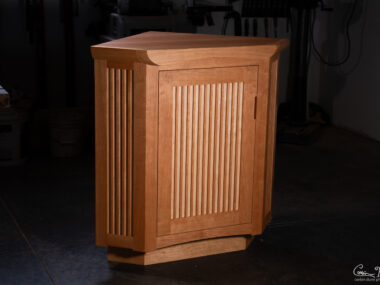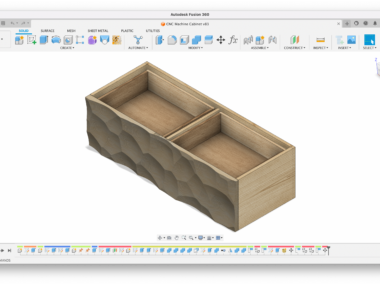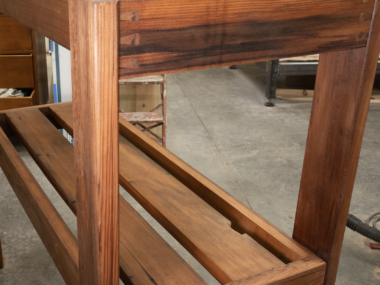The Duality Unicycle Handle – Part 2 Strength
This is a continuation of the last post introducing the project.
This project isn’t done (it isn’t strong enough), but feel free to play with things and download the files. I uploaded the latest STL, a strength area for more infill, the latest print settings (PrusaSlicer), and the Fusion 360 CAD file: Duality Unicycle Handle
My 16 hour print finished with a new prototype! I was excited about this one because it was printed in PETG, which should be a lot stronger than PLA. I also printed with more infill: 50% overall with a gyroid pattern along with a special “strength area” defined in PrusaSlicer set to 80% gyroid fill. I also addressed a few small things with the last design: the grips tilt down ever so slightly (5 degrees) and I smoothed out some more corners. The disadvantage of this is that the whole bottom requires supports.


I did some quick cleanup and tossed on the unicycle and immediately tried to break it. Sure enough, it easily snapped — not as easily as the 10% infill PLA, but still way too easy.


The break point isn’t too surprising. I pushed down on it, and the parallel layers first separated on the thin lip due to poor adhesion and then allowed the perpendicular layers to snap. In the above photo on the right I flipped over the base piece to show where the layers separated.
This is going to be a hard problem to fix. It might require annealing; re-melting the plastic in an oven to blend together the layers. To do that properly I might have to print at 100% infill, which will use a lot more plastic, take a lot longer, and weigh more.
With regards to weight I compared the standard handle to my duality handle; 103 grams vs 111 grams. This isn’t too bad, but it will require more weight to make it stronger.


So, what to do? I printed the PETG at 250C. I might be able to try it at 260C to see if I get better adhesion, but possibly at the risk of distortion. I can modify the model a bit to increase strength in this specific area, but I don’t think I can get it strong enough based on how easily it failed. I’m considering printing with less infill to leave more holes and backfilling with something such as epoxy. However, most epoxy is rather brittle so this may not work.
I’m open to ideas and suggestions! Feel free to comment below.






[…] Continue on to part #2 where I discuss strength. […]
Fun project Corbin!
I understand your goal, but for my purposes, I would be leaning toward how I could simply utilize one of your prototypes to create a mold for a cast aluminum handle.
Alternately, I suppose the file could also probably be modified to plug into a CNC machine? Or one could simply scan a completed handle for CNC coordinates yes?
Again, I understand your goal being to create something light, but I would certainly be interested in an aluminum version.
Thanks Ned! Yes, it *could* be CNC’ed, and I do have a machine, but there are a few problems: The deep cavities and shape would make it difficult to machine, and the tubing would be left solid, making it quite heavy. Another approach is to make a mold and do traditional injection molding with another plastic; that would produce a high strength part — it just isn’t something I think I can do “at home”.
Corbin, nice design/materials/engineering project. It’s not too surprising where it’s breaking, considering the length of the “moment arm”, the handle. (1) Beefing up that area, which adds weight and bulk (and costs more in material) or (2) shortening the handle seem to be the only options. Still, it might be futile considering the consequences of failure on the trail and material “fatigue” over time.
Thanks Cliff! Yes, it isn’t surprising at the break point, but the failure doesn’t seem to be due to material strength but adhesion of the layers; some others on Facebook suggested I print at a 45 degree angle to possibly get more strength. And/or add steel inserts in key locations. We’ll see! Luckily with plastic, there is generally little fatigue failure (unlike steel) and generally just catastrophic failure and cracking.